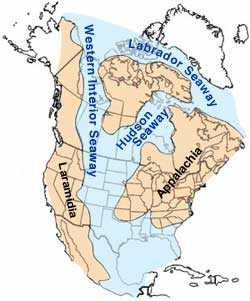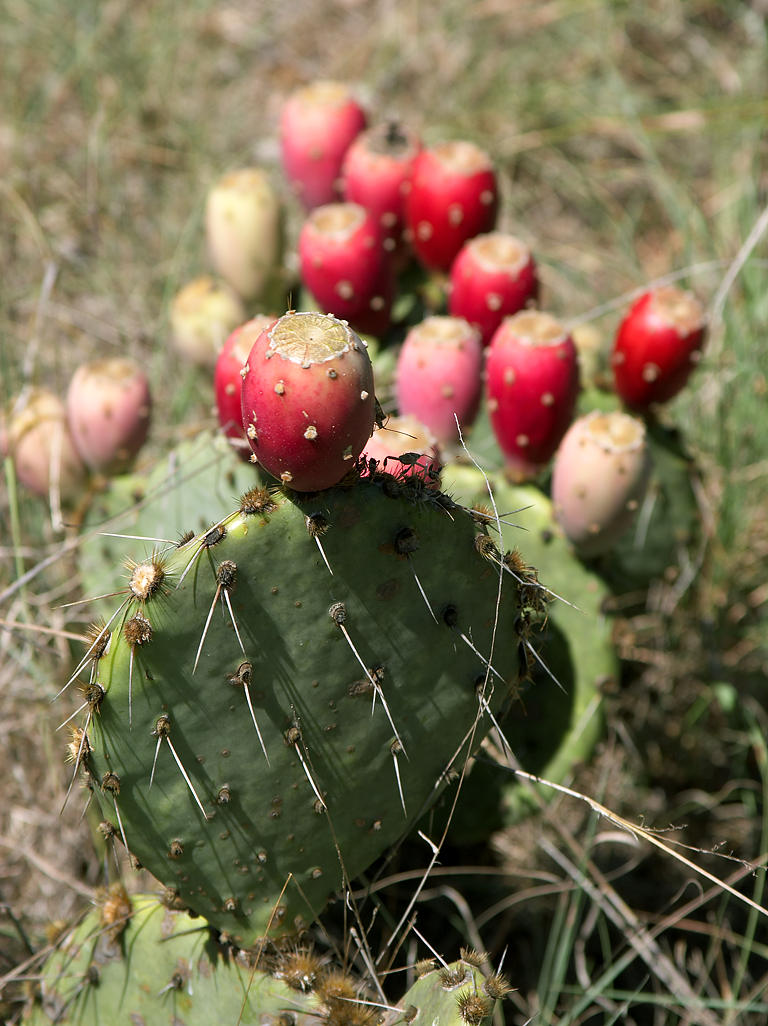Nathan from Escalante Outfitters took us on a tour just outside of Escalante.
www.escalanteoutfitters.com was a great place to stay and Nathans Natural History Tour was a great addition. All of our guessing and trying to put geological pieces together - we just got it all put properly together. For at least a few hours the millions of years of rocks and cliffs fell into place.
This is a summary of some of our new knowledge.
 |
| The inland sea |
The sea deposited sediment, plant and animal material, and some of this was preserved because of the many later layers of sandstone that pile onto of it.
The period of time is the Cretaceous age. Amongst the many fossils that can be found, are many dinosaur fossils, helping to piece together the history of these animals.This photo has been found in exactly the national park we were in.
- Mahognia, berberis where the Indians found yellow dye in the bark
Fossilized skeleton of a young hadrosaur displayed at the Grand Staircase-Escalante National Monument
 |
We found smaller dinosaur fossils. From probably 80-90 million years ago. They could have been from the duck billed dinosaur that lived in that are at that time.
There are many events that change the colour of the rock, making the rock red, as we have experienced in the Capitol Reef Area.
The petrified wood that we saw, was preserved from the many layers of volcanic ash that fell over the area, from Boulder Mountain. Morrison River, was a huge river with lots of power that poured enormous amounts of remains over the are that now is full of 1500 tons of pertrified wood. Lots of it is still covered, The silica dripped down through the many layers, and helped preserve the wood, changing it to rock. The minerals in the overlying rock changed the colour of the wood.
The Escalante River that runs today, gathers water from many sites. There is usually 15 -20 cfs. (cubic feet pr second) But there are times when there flows up to 60 cfs, desoying pipes and drains, that often are replaced every 3 years.
We were given names for many of the plants we had been admiring.
In the Entrada sandstone layer there are many dinosaur footprints. We found some.
The Capitol Reef is a monocline. (was the Escalante Starircase also?()? formed in the jurassic time period (60 - 70 million years ago). A sloped form, one end has been uplifted, causing the back end to tilt back. It is called a Waterpocket Fold. A nearly 100-mile long warp in the Earth's crust, has a very steep side in an area of otherwise nearly horizontal layers. A monocline is a "step-up" in the rock layers.
The rock layers on the west side of the Waterpocket Fold have been lifted more than 7000 feet higher than the layers on the east. Major folds are almost always associated with underlying faults. The Waterpocket Fold formed between 50 and 70 million years ago when a major mountain building event in western North America, the Laramide Orogeny, reactivated an ancient buried fault. When the fault moved, the overlying rock layers were draped above the fault and formed a monocline.
http://www.nationalparks.org/explore-parks/capitol-reef-national-park
There was once millions of acres of sand dunes, in the area we look upon between Escalante and Boulder.
The area was larger than any sand desert we know today. These dunes were on top of a moving sea. The sea jolted and moved, rivers and deposits were formed on top of the dunes, pushing them downwards and causing them to crush together, forming rock. The came cracks in the surfaces, water in the cracks turned to ice and the cracks were made larger and became a place that could gather moss, seeds and particles of dirt.
These small plants started growing, leaving behind their leaves and debris for other plants to use in their life growing process.
|











No comments:
Post a Comment